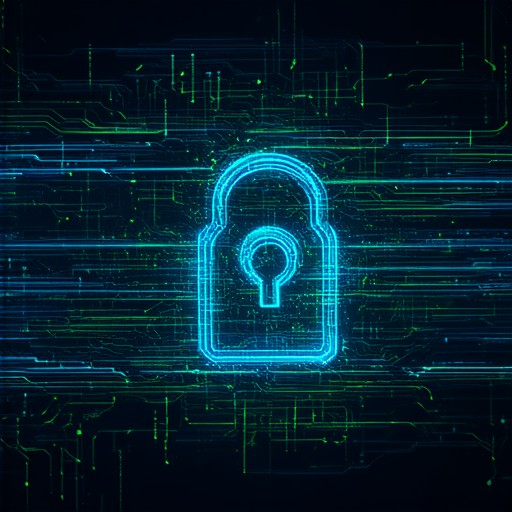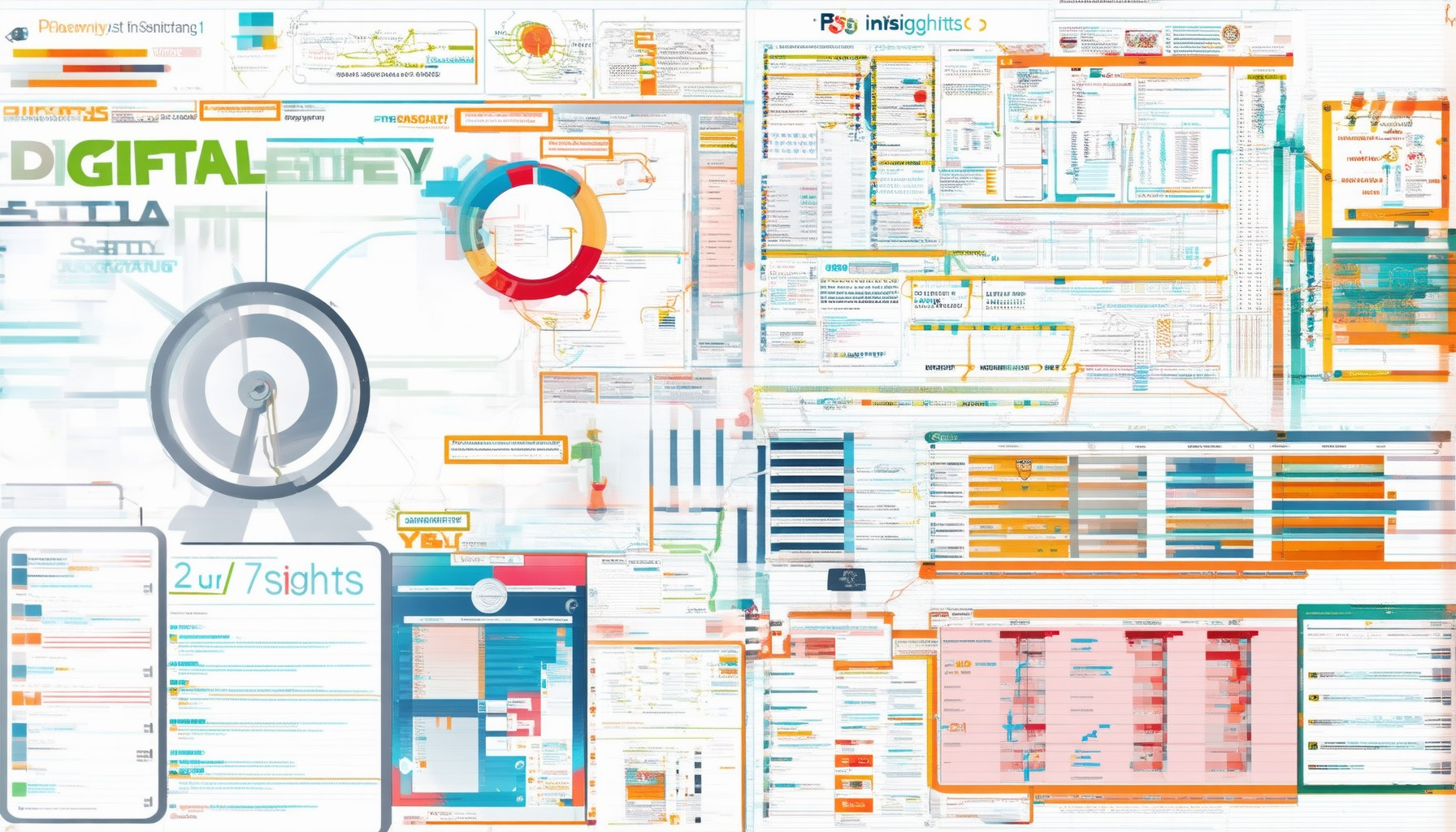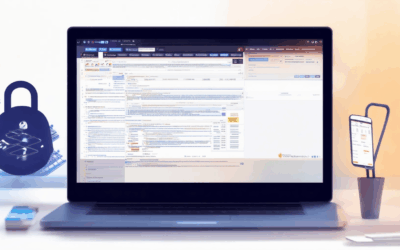In today’s rapidly evolving technological landscape, ensuring digital safety has become paramount. As we navigate an increasingly connected world, the need for robust digital safety measures has never been more critical. This comprehensive guide delves into the core aspects of digital safety, offering valuable insights that every individual and organization should understand. From understanding the fundamental components to grasping the essential rules and strategies, this article aims to provide a thorough exploration of digital safety. Whether you’re looking to protect your personal information, safeguard sensitive data, or build a secure environment, the insights presented here will equip you with the knowledge needed to stay ahead in the digital realm. By examining the key principles and practices, this guide empowers you to take proactive steps toward ensuring your digital safety and fostering a secure online presence.
Key Takeaways
- Prioritize Digital Safety: Essential for protecting personal and organizational assets.
- Implement Security Measures: Use tools like antivirus, firewalls, and encryption.
- Secure Personal Information: Use strong passwords and two-factor authentication.
- Manage Privacy: Control data collection and use privacy settings on platforms.
- Promote Positive Interactions: Avoid cyberbullying by educating yourself and others.
- Enable Protective Tools: Use VPNs and other tools to enhance security.
- Stay Informed: Follow reliable sources for updates on cybersecurity threats.
- Educate Users: Provide training to improve online safety awareness.
- Comply with Laws: Adhere to regulations like GDPR to avoid penalties.
- Minimize Data Breach Risks: Use strong security measures to prevent breaches.
- Support Mental Health: Protect against cyberbullying to aid mental well-being.
- Build Trust Online: Safe interactions foster trust in digital spaces.
- Reduce Financial Losses: Secure payment methods prevent fraud.
- Develop Robust Strategies: Plan for risks, implement safeguards, and continuously monitor.
- Collaborate Across Stakeholders: Partner to create effective digital safety solutions.

What are the four C’s of digital safety?
The four Cs of digital safety are essential concepts for understanding and protecting oneself online. These principles help individuals navigate the internet safely and securely.
- Content: This refers to the information and material available online. It includes harmful content such as viruses, phishing attempts, and inappropriate material. Understanding what constitutes unsafe content is crucial for digital safety.
- Contact: This involves interactions with others online, such as through social media, messaging apps, or forums. Being cautious about who you interact with and verifying identities is key to staying safe online.
- Conduct: This relates to how you behave online. Engaging in respectful communication, avoiding illegal activities, and following online etiquette are important aspects of digital safety.
- Commerce: This involves financial transactions and shopping online. Safeguarding personal and financial information, such as credit card details, is vital when conducting online purchases.
By understanding and applying these four Cs, individuals can significantly enhance their digital safety and protect themselves from potential threats.
What are the five digital safety rules?
Here are five essential digital safety rules to protect yourself online:
- Use Strong Passwords : Create complex passwords with a mix of letters, numbers, and symbols. Avoid reusing passwords across multiple accounts. Link to password management guide
- Enable Two-Factor Authentication : Add an extra layer of security by enabling 2FA for your accounts. This prevents unauthorized access even if your password is compromised. Learn how to set up 2FA
- Be Cautious with Links and Downloads : Hover over links to check if they lead to trusted domains. Download software only from official app stores or trusted sources. Check domain reputation
- Use Public Wi-Fi Wisely : Avoid sensitive transactions on public networks. Connect to private networks whenever possible and always use a VPN if unsure. Wi-Fi safety tips
- Avoid Oversharing Personal Information : Refrain from sharing details like addresses, phone numbers, or financial info via untrusted platforms or messages. Privacy protection tips

What Are the 4 R’s of Online Safety?
The 4 R’s of online safety are essential principles that guide users in navigating the digital world responsibly and safely. These principles foster a positive and secure environment while promoting respectful interactions.
- Respect : Treat everyone online with kindness and dignity. Avoid cyberbullying, hate speech, and discrimination. Respond thoughtfully to comments and engage in constructive conversations.
- Example: If you receive a mean comment, consider ignoring it or reporting it instead of reacting negatively.
- Responsibility : Take ownership of your actions and ensure your behavior aligns with legal and ethical standards. Protect personal information and respect intellectual property rights.
- Example: Do not share passwords or sensitive data and always give credit to creators of content you use.
- Reasoning : Exercise critical thinking to evaluate information and avoid scams or misinformation. Verify sources and question suspicious claims.
- Example: Before sharing news, check multiple reliable sources to confirm the facts.
- Resilience : Recover from challenges gracefully and adapt to changing circumstances. Stay positive and seek support when needed.
- Example: If your account is hacked, remain calm and reset your security measures promptly.
By practicing these principles, users contribute to a safer and more respectful online community while safeguarding themselves against potential risks.

Understanding Digital Safety
Digital safety encompasses a range of practices and technologies designed to protect individuals and organizations from online threats and risks. It involves ensuring secure access to information, safeguarding personal data, and fostering a positive online environment.
Key Components of Digital Safety
- Security Measures : Implementing antivirus software, firewalls, and encryption to protect against malicious attacks like viruses, malware, and phishing attempts.
BlindBrowser offers robust security tools tailored for online protection. - Personal Information Protection : Securing sensitive data such as passwords, credit card numbers, and Social Security information. Use strong, unique passwords and enable two-factor authentication wherever possible.
- Privacy Management : Understanding and controlling how personal data is collected and used. Utilize privacy settings on social media platforms and be cautious about sharing location data.
- Positive Online Interactions : Promoting respectful communication and avoiding cyberbullying. Educate yourself and others about online etiquette and digital citizenship.
- Content Moderation and Governance : Ensuring platforms moderate illegal or harmful content effectively. This involves responsible design and governance to empower users while maintaining safety.
Practical Steps to Enhance Digital Safety
- Stay Informed : Keep updated on the latest cybersecurity threats and trends through reliable sources like BlindBrowser Blog .
- Use Protective Tools : Employ tools like BlindBrowser Antivirus to detect and remove malicious software.
- Enable Privacy Features : Use VPNs to mask your IP address and encrypt your internet connection, available through BlindBrowser VPN .
- Report Abuse : If you encounter harmful content or behavior, report it to the respective platforms to help maintain a safer environment.
By adopting these measures, individuals can significantly reduce their risk exposure and contribute to a safer digital space.
Why is Digital Safety So Important?
Digital safety is crucial in today’s interconnected world, encompassing several key aspects that protect individuals, organizations, and society as a whole. Here’s a breakdown of its importance:
- Personal Information Protection :
Sharing personal details online can expose individuals to identity theft, fraud, and blackmail. Safeguarding sensitive information ensures privacy and prevents misuse. - Prevention of Online Scams :
Cybercriminals often use phishing, fraudulent websites, or deceptive messages to steal money or install malware. Awareness and caution can significantly reduce the risk of falling victim to these attacks. - Combating Cyberbullying and Harassment :
Online platforms can be breeding grounds for cyberbullying, harassment, and hate speech. Knowing how to identify and report such behavior, along with setting privacy controls, helps mitigate these risks. - Respecting Privacy :
Unauthorized access to someone’s devices or accounts without consent violates privacy rights. Adhering to ethical standards and respecting boundaries is a cornerstone of digital safety. - Implementing Security Measures :
Strong passwords, two-factor authentication, and regular software updates are essential defenses against hacking and unauthorized access. They protect personal and professional accounts from potential breaches. - Minimizing Consequences of Data Breaches :
A single data breach can lead to financial loss, reputational damage, and even real-world dangers if personal information is misused. Proactive measures can prevent such incidents and their fallout. - Compliance with Legal Requirements :
Many countries have strict laws regarding data protection, such as GDPR in Europe. Non-compliance can result in hefty fines and damage to an organization’s reputation. - Supporting Mental Health :
Cyberbullying and online harassment can have severe psychological effects. Tools and policies to limit exposure to harmful content contribute to better mental health outcomes. - Building Trust in Digital Interactions :
When people feel safe online, they are more likely to engage in transactions, share information, and collaborate. This fosters trust in digital environments. - Reducing Financial Losses :
Secure payment methods, verification processes, and alerts for suspicious activities help prevent financial theft and fraud, protecting users’ economic well-being. - Promoting a Safer Internet Ecosystem :
By adopting secure practices and advocating for robust cybersecurity policies, we create a safer space for everyone, from individuals to businesses and governments. - Empowering Through Education :
Workshops, guides, and awareness campaigns equip users with the knowledge and skills needed to protect themselves online, fostering a culture of digital safety.
In summary, digital safety is vital for protecting personal and organizational assets, preventing crime, safeguarding mental health, respecting privacy, and building trust in our increasingly connected world.

What is the Digital Safety Strategy?
A digital safety strategy refers to a comprehensive plan or framework designed to protect individuals, organizations, and systems from digital threats, vulnerabilities, and risks. It encompasses measures taken to ensure secure, reliable, and efficient digital environments while safeguarding sensitive information and preventing unauthorized access.
Key Objectives of a Digital Safety Strategy
- Risk Management : Identify potential threats, vulnerabilities, and hazards that could impact digital assets and implement safeguards to mitigate these risks.
- Security Implementation : Establish policies, protocols, and procedures to enforce security standards across all digital platforms and systems.
- Compliance : Ensure adherence to relevant regulations, laws, and industry standards to maintain trust and legal compliance.
- Education and Awareness : Provide training and resources to educate users about digital safety best practices to reduce exposure to cyber threats.
- Monitoring and Analysis : Continuously monitor digital systems for suspicious activities, breaches, or vulnerabilities and take corrective actions as needed.
- Collaboration : Foster partnerships between stakeholders, including governments, businesses, and communities, to share information and develop coordinated strategies.
Components of a Digital Safety Strategy
- Secure Infrastructure : Implement robust cybersecurity measures such as firewalls, encryption, and multi-factor authentication to protect digital infrastructure.
- Data Protection : Develop strategies to safeguard personal, financial, and sensitive information through encryption, access controls, and regular backups.
- Access Control : Limit access to critical systems and data to authorized personnel only, using identity verification and authorization processes.
- Incident Response : Create plans to detect, respond to, and recover from cyber incidents quickly and effectively.
- Regular Audits : Conduct routine audits and assessments to identify gaps in security and ensure ongoing compliance with standards.
- User Education : Offer training programs and resources to help users understand and implement best practices for staying safe online.
Example Strategies
The World Health Organization (WHO) has emphasized the importance of digital safety in healthcare settings, promoting strategies like the Digital Clinical Safety Strategy launched in 2021. This initiative focuses on improving the safety of digital technologies in health and care, ensuring that patients receive accurate and reliable information while protecting their data.
Similarly, the National Institute of Standards and Technology (NIST) provides guidelines for developing and implementing digital safety strategies, emphasizing the role of collaboration between organizations and governments to address emerging threats.
Tools and Resources
To support digital safety efforts, tools like BlindBrowser offer resources and tips for enhancing online privacy and security. These platforms provide insights into the latest trends in internet security and laws affecting digital safety.
By adopting a proactive approach to digital safety, organizations can minimize risks, protect their assets, and foster trust among users. A well-executed digital safety strategy not only safeguards against cyber threats but also enables innovation and efficiency in the digital age.




